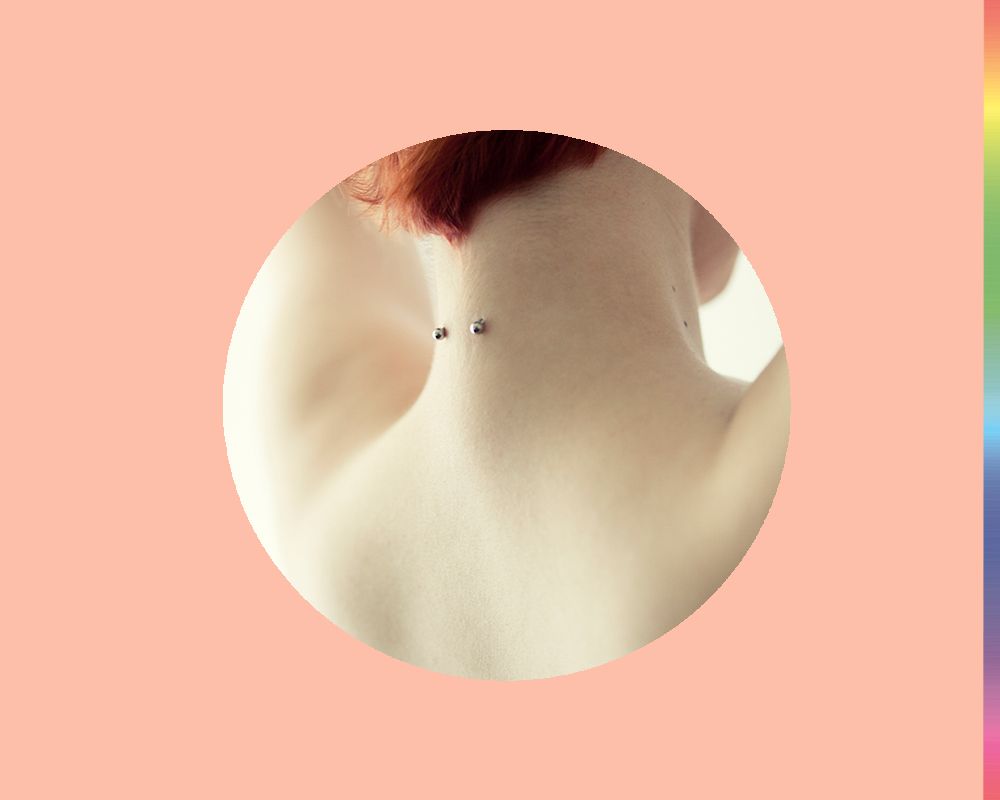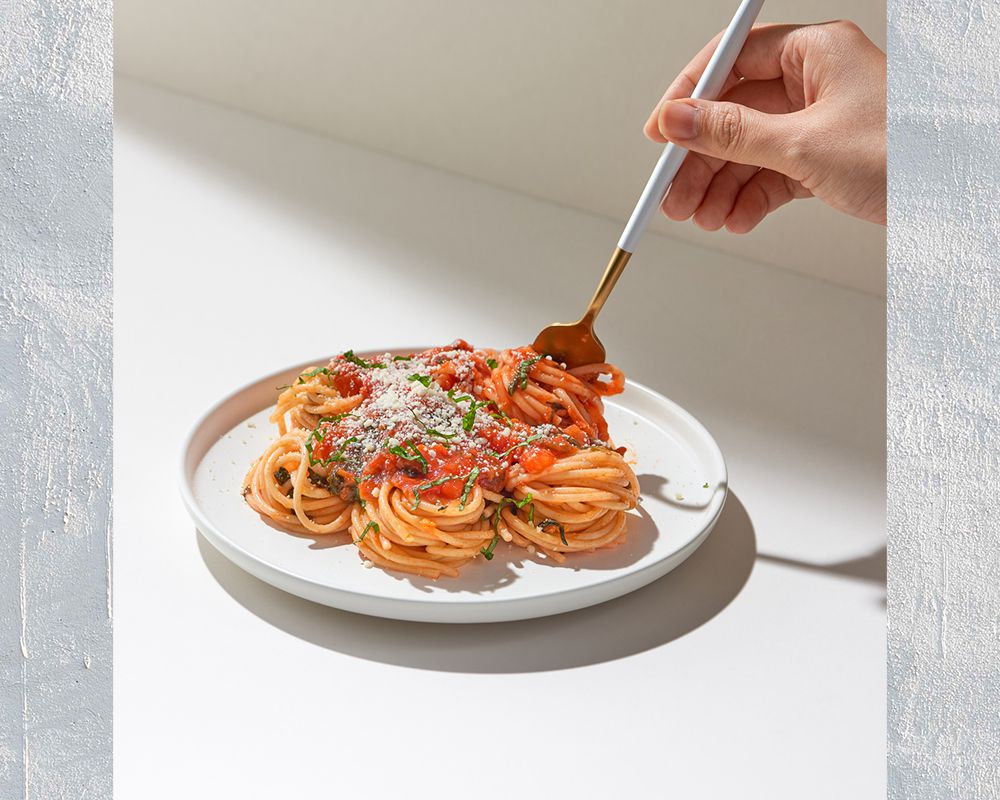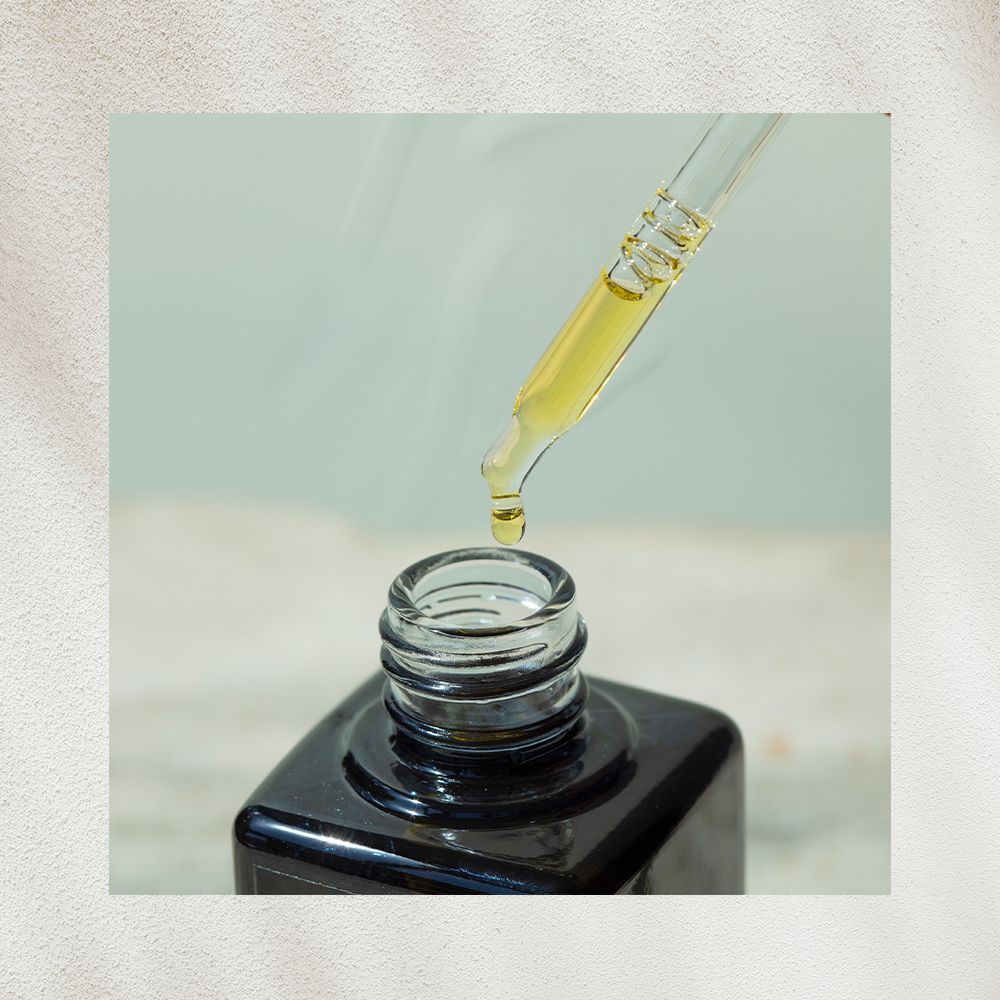What to Know Before Getting a Nape Piercing

Just like tattoos, piercings don’t always have to be visible. Some piercings, like the nape piercing, are placed somewhere a bit more hidden; in this case, the back of the neck. These kinds of piercings tend to feel a bit more intimate, considering your ability to see them is controlled by whoever has them. Plus, nape piercings are perfect if you’re someone who likes body modification but can’t have a ton of visible piercings. Nape piercings are a great choice of piercing in general—they look cool, are as visible as you want them to be, and are a lesser-known piercing in general, making then feel exceptionally unique.
We spoke to piercers Drew Young and Natalia Smith, and dermatologist Dr. Weston Waxweiler, to learn more. Read on for what they had to tell us about this special piercing, including pain, aftercare, and more.
Meet the Expert
- Drew Young is the owner of Bohemian Piercing in Indiana.
- Natalia Smith is the head piercer at BodyArt Caribbean.
- Dr. Weston Waxweiler, a board-certified dermatologist with the Cleaver Medical Group.
Nape Piercings
Placement: Back (or nape) of the neck
Pricing: Between $30 and $50
Pain level: “Pain ranges between a hard 6 and 8,” says Smith.
Healing time: 5 to 6 months
Aftercare: Flush the piercing with a saline solution twice a day until it has fully healed
What is a Nape Piercing?
A nape piercing is a surface piercing placed on the back of the neck. It’s made up of two actual piercing sites, as the jewelry is threaded into and then back out of the skin. Nape piercings are sometimes simply just referred to as “neck” piercings, as they’re the most common choice for that area. There are a number of other options with that placement, though, so it’s better to call them nape piercings to distinguish you’re talking about the correct piercing.
The process of getting a nape piercing is pretty simple. First, you consult with your piercer about where you want the jewelry placed. It’s most common for nape piercings to be performed with a barbell, so be sure to consider how both ends will sit on your neck. Once you’ve chosen the placement, the spot will be marked and the piercer will insert a needle into the opening point and out of the exit point. The jewelry is pushed through the holes right behind the needle to be placed under the skin. You’ll know when the process has been properly completed because “the threaded ends should be sitting flush with the surface of the skin,” says Young.
Pain and Healing Time
As with every body modification, how much a nape piercing will hurt really depends on your body’s individual tolerance for pain and your piercer’s process, says Young. However, nape piercings are definitely a bit more on the painful side out of all the available piercings. “On a scale from 1-10, the initial piercing pain ranges between a hard 6 and 8,” says Smith.
Since nape piercings are just surface piercings, they don’t require any extra healing time or anything unique. Instead, your nape piercing typically takes at least two months to heal—though you can expect up to five or six months for a full heal. Your best bet is to keep caring for your new piercing until it looks and feels fully healed, regardless of exactly how long it takes.
Cost of a Nape Piercing
Nape piercings cost something different at every shop you go to—even two that are right next to each other—thanks to variations in shop pricing, your piercer’s experience, and the piercing’s difficultly. You can expect a cost of around $30-$50, though.
Talk with your piercer before starting the process, as some shops charge twice for piercings: once for the process and once for the jewelry. The additional charge could be anywhere form $30 to $80, and in some cases, even more. “Pricing of the jewelry costs could always be even more depending on the type of material, style, and brand of the threaded ends chosen for use,” says Young.
Aftercare
Taking care of your nape piercing may seem a bit difficult because it’s on the back of your neck, so it may be best to ask for assistance from people you live with if the option is available. If not, you’re still able to take care of your new piercing—it might just require you to do so in a mirror.
Regardless, the aftercare instructions for a nape piercing include washing the area with a sterile saline solution twice per day. For an out-of-sight piercing like this, it may be best to submerge a cotton swab in the solution and gently rub it along the piercing site. Otherwise, you could get crafty with submerging your piercing directly into the saline solution. Try laying flat with just your piercing in a small, filled container, or you could even try holding a small container against the back of your neck while looking down at the floor. Whatever works can be done, just make sure your piercing is being fully submerged in the saline solution.
Be careful around materials like wash cloths or bedsheets; anything that your nape piercing could snag on could be a potential hazard, both in terms of tugging the piercing and harboring bacteria. Avoid touching or picking at the piercing, even if you see build-up. “Leave your piercing alone unless you are cleaning it,” says Waxweiler.
Side Effects of a Nape Piercing
“[A] nape piercing is [one] of the more ‘risky’ piercings one can do,” says Waxweiler. “It has a higher tendency to scar poorly or become infected.”
- Scarring: Small amounts of scarring can occur around the piercing site if it’s irritated or tugged on during the healing process. Scars can also form if your piercer uses a barbell that is too big or too heavy for your skin.
- Keloids: Keloids are a more serious form of skin scarring where large, painful raised scars form around the piercing sites. Keloids grow as an over-defense to the physical trauma caused by a piercing, and can range in intensity from painful and problematic to simply being an unseemly sight.
- Infection: Infections are caused when the proper aftercare isn’t followed and bacteria builds up in your new piercing. If you notice symptoms like redness, burning, itching, pus, intense pain, or prolonged swelling, they may be signs of an infection. “Infection can lead to serious complications including scarring, fever, chills, and even hospitalization,” says Waxweiler. “If you suspect your piercing is infected, please see your doctor immediately for a possible antibiotic prescription.”
How to Change Out a Nape Piercing
Because nape piercings are on the back of your neck, they’re not the easiest to remove by yourself. That’s why if you do want to switch out your jewelry, both Smith and Young suggest returning to your piercer to be sure it’s done properly and safely. Young notes that nape piercings are usually done so that the piercing is specifically shaped around the barbell you’re pierced with. However, “the tops can be changed to different options if you wish,” he says, so you can definitely change out the appearance of the visible part of the piercing, though the actual bar won’t be replaced.
What Type of Jewelry Is Used for a Nape Piercing?
Barbell: A barbell is a long metal bar with two small balls on either end, with one being fixed and one being removable. Some surface barbells are created so both barbells are removable, so you can change your jewelry without fully replacing it. In a nape piercing, the bar is pushed through below the surface level of the skin from the entry to the exit point and secured.
What Jewelry Material Is Used for a Nape Piercing?
- Pure sterling silver: Pure silver is probably the type of jewelry metal you see the most, but that doesn’t mean it’s the best. While it’s made up of 99.9% silver content, it’s not completely solid, so you have to be careful. Sterling silver is fairly soft and, if the proper jewelry isn’t used, could be vulnerable to damage or could even possibly harbor bacteria.
- Surgical steel: Surgical steel is another popular choice for jewelry, but again, it’s not the safest. Because it contains Nickel, surgical steel should be avoided by those with nickel allergies or who find nickel generally irritating. “Many of my patients are allergic to nickel and many of the metal piercings out there contain some sort of nickel,” says Waxweiler. “We can try these later, but while the piercing initially heals, stick to something a little less risky.”
- Titanium: For a definitely safe metal, your best bet is to opt for titanium. Titanium doesn’t contain nickel, so it won’t cause an allergic reaction or irritation. It also doesn’t tarnish and is lightweight, so you won’t even have to think about your jewelry until it’s time to change it out.
- Gold: For a unique metal, go for gold. However, make sure that any gold jewelry you get is over 14 karats, as anything softer could harbor bacteria and harm your piercing.
Body Piercing Guide—Sites, Styles, What to Expect, Healing, and Care








